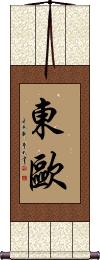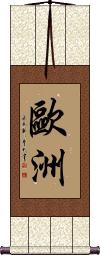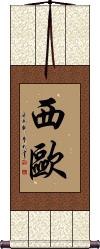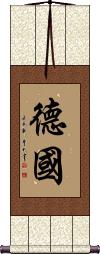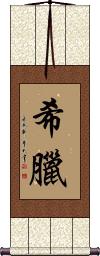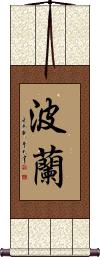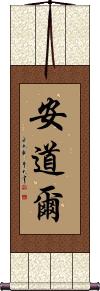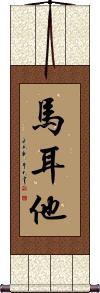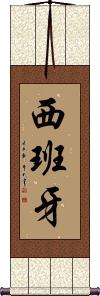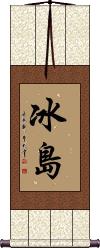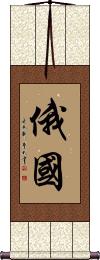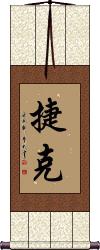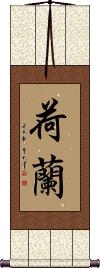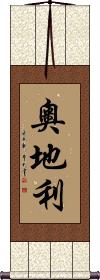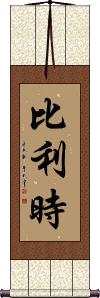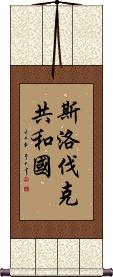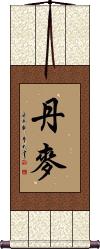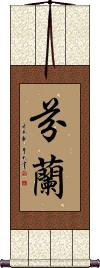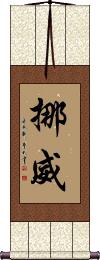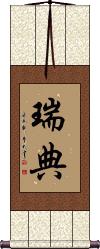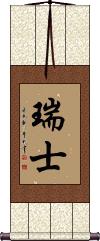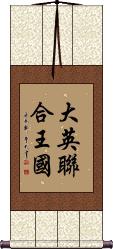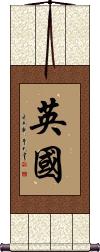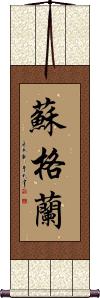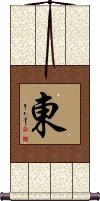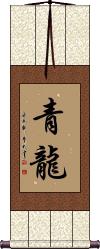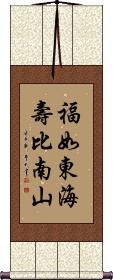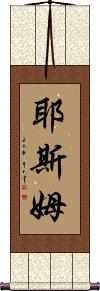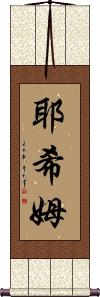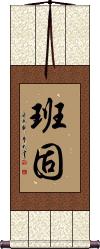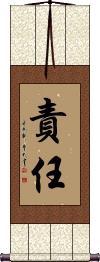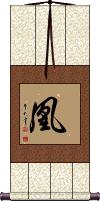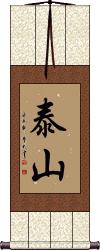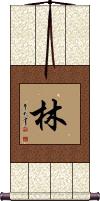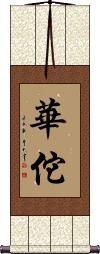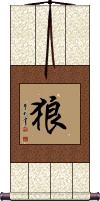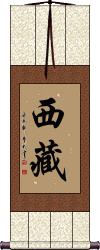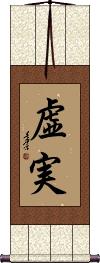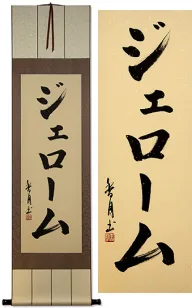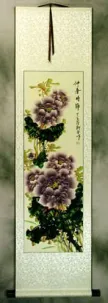Many custom options...
And formats...

The name Eastern Europe in Chinese / Japanese...
Buy an Eastern Europe calligraphy wall scroll here!
Personalize your custom “Eastern Europe” project by clicking the button next to your favorite “Eastern Europe” title below...
2. Europe
4. Israel
5. Germany
6. Greece
7. Poland
8. Spain
9. Andorra
10. Hungary
11. Italy
12. Lithuania
13. Macedonia
14. Malta
15. Monaco
16. Portugal
17. Spain
18. Ukraine
19. Croatia
20. Estonia
21. Italy / Italia
22. Latvia
23. Moldova
24. San Marino
25. Albania
26. Liechtenstein
27. Slovenia
28. Iceland
29. Russia
30. Azerbaijan
31. Bulgaria
32. Romania
33. Czech Republic
35. Austria
36. Belgium
37. Greenland
38. Luxembourg
39. Slovak Republic
40. Denmark
41. Finland
42. Norway
43. Sweden
44. Switzerland
45. Gibraltar
46. Great Britain
47. Northern Ireland
48. United Kingdom
49. Ireland
50. England
51. Scotland
52. East
53. American Samoa
54. Blue Dragon / Azure Dragon
55. Haidong Gumdo
56. Longevity / Long Life Wishes
57. Yesim
58. Hanko
59. Old, But More Vigorous in Spirit
60. Responsibility
61. Bounce Back / Stage a Comeback
62. Phoenix
63. Live For The Day
64. Tarzan
65. Lim
66. Hua Tuo
67. Wolf
68. Tibet
69. Kyojitsu: Falsehood and Truth
Eastern Europe
This is the Chinese, old Korean Hanja, and traditional Japanese name for Eastern Europe.
![]() Please note that Japanese use an alternate/simplified version of the character for Europe - it also happens to be the same simplification used in mainland China. Click on the character to the right if you want the Japanese/Simplified version of this two-character Eastern Europe calligraphy.
Please note that Japanese use an alternate/simplified version of the character for Europe - it also happens to be the same simplification used in mainland China. Click on the character to the right if you want the Japanese/Simplified version of this two-character Eastern Europe calligraphy.
Europe
This is the Chinese name for the continent of Europe.
 Please note that Japanese use an alternate/simplified version of the first character and an alternate form of the second character. Click on the characters to the right if you want the Japanese/Simplified version of this two-character Europe calligraphy.
Please note that Japanese use an alternate/simplified version of the first character and an alternate form of the second character. Click on the characters to the right if you want the Japanese/Simplified version of this two-character Europe calligraphy.
Western Europe
This is the Chinese, old Korean Hanja, and traditional Japanese name for Western Europe.
![]() Please note that Japanese use an alternate/simplified version of the character for Europe - it also happens to be the same simplification used in mainland China. Click on the character to the right if you want the Japanese/Simplified version of this two-character Western Europe calligraphy.
Please note that Japanese use an alternate/simplified version of the character for Europe - it also happens to be the same simplification used in mainland China. Click on the character to the right if you want the Japanese/Simplified version of this two-character Western Europe calligraphy.
Israel
Germany
Greece
Poland
Spain
This is the Japanese Katakana name for the country of Spain.
Note: Because this title is entirely Japanese Katakana, it should be written by a Japanese calligrapher.
See Also: Europe
Andorra
Hungary
Italy
Lithuania
Macedonia
Malta
Monaco
Portugal
Spain
西班牙 is the Chinese name for the country of Spain.
This is sometimes used in Japanese too, though in modern times, Japanese tend to use a Katakana version of Spain.
See Also: Europe
Ukraine
Croatia
Estonia
Italy / Italia
イタリア is the Japanese Katakana name for the country of Italy.
This version is the most common way to write Italy, and actually sounds a bit like the real name of Italy which is Italia.
Note: Because this title is entirely Japanese Katakana, it should be written by a Japanese calligrapher.
See Also: Europe
Latvia
Moldova
San Marino
Albania
Liechtenstein
Slovenia
Iceland
Russia
Azerbaijan
Bulgaria
Romania
Czech Republic
Netherlands / Holland
This is the Chinese name for the country of the Netherlands. The name actually sounds like “Holland,” the other common name for this Benelux country.
There is not differentiation between the words Holland and Netherlands in Chinese, the characters shown here represent the only official name for this country in Chinese.
See Also: Belgium | Luxembourg | Europe
Austria
This is the Chinese name for the country of Austria.
See Also: Germany | Switzerland | Europe
Belgium
This is the Chinese name for the country of Belgium.
See Also: Netherlands | Luxembourg | Europe
Greenland
Luxembourg
This is the Chinese name for the country of Luxembourg.
See Also: Netherlands | Belgium | Europe
Slovak Republic
斯洛伐克共和國 is the Chinese name for the country of the Slovak Republic.
See Also: Czech Republic | Europe
Denmark
Finland
Norway
Sweden
Switzerland
Gibraltar
This is the Chinese name for Gibraltar (territory of the United Kingdom but also claimed by Spain).
See Also: Great Britain | Spain | Europe
Great Britain
This is the Chinese name for Great Britain.
See Also: England | United Kingdom | Scotland | Ireland | Europe
Northern Ireland
This is the Chinese name for the country of Northern Ireland.
See Also: Ireland | United Kingdom | Great Britain | Europe
United Kingdom
This is the most common Japanese name for the United Kingdom.
See Also: Great Britain | England | Scotland | Ireland | Europe
United Kingdom
大英聯合王國 is the Chinese name for the United Kingdom.
See Also: Great Britain | England | Scotland | Ireland | Europe
Ireland
This is the Chinese name for the country of Ireland.
See Also: Northern Ireland | Great Britain | England | Scotland | United Kingdom | Europe
England
This is the Chinese name for the country of England.
See Also: Great Britain | United Kingdom | Ireland | Scotland | Northern Ireland | Europe
Scotland
蘇格蘭 is the Chinese name for Scotland.
See Also: Great Britain | United Kingdom | England | Northern Ireland | Ireland | Europe
East
東 is the direction East in Chinese, Japanese Kanji, and old Korean Hanja.
Sometimes used as an abbreviation for the Eastern Hemisphere.
This can also be the surname Dong in China.
In Japan, this can be an abbreviation for a kind of six-stringed zither, or the personal name, Yamato.
東 is used as a suffix for many words in Asia. In fact, it's part of the CJK word 東方 meaning Orient or Oriental. The word 東方 more literally translates as “Eastern Kingdoms,” “Eastern Countries,” or simply “The East.”
American Samoa
This is the Chinese name for the territory of American Samoa (formerly known as Eastern Samoa).
This should not be confused with Independent Somoa which is to the west.
If you want just a general “Samoa” title, just use the plain “Samoa” entry, as it does not actually designate western, eastern, American, or independent.
See Also: Oceania
Blue Dragon / Azure Dragon
青龍 is a scholarly title for “Blue Dragon” or “Azure Dragon.”
You'll find this title used in ancient Chinese literature and astronomy. This dragon has dominion over the eastern sky or eastern heavens. The Azure Dragon is also noted for representing the spring season. Also seen as an auspicious omen.
Emperor Huizong of the Song Dynasty canonized the five colored dragons as “kings.” The Azure Dragon represents the most compassionate of kings.
In Japanese, this title is known with the same meaning but can also be a given name, Seiryuu or Seiryu.
Note, the first character can be written as ![]() OR
OR ![]() . Same character, just two ways to write it.
. Same character, just two ways to write it.
Haidong Gumdo
海東劍道 is the Korean martial arts style that means Eastern Sea Sword Way.
The character meanings break down this way:
海 = Sea
東 = East/Eastern
劍 = Sword
道 = Way/Path/Style/Method
This can sometimes be romanized as “Hae Dong Kum Do,” “Haidong Kendo,” “Hae Dong Geom Do,” “Haedong Geomdo,” or “Haedong Kumdo.”
If you want this written in modern Korean Hangul (해동검도) instead of Hanja (Chinese), click on the Hangul characters next to the Korean flag above, instead of the regular button.
Longevity / Long Life Wishes
A wish for a long and prosperous life
福如東海壽比南山 is a phrase that means “May you have good fortune as great as the eastern oceans, and may your life last as long as the southern mountains.”
In ancient Chinese mythology, the eastern oceans and southern mountains are where God resides (basically it is the same as saying “heaven”). So it's like saying, “May your good fortune and life be as vast as the heavens.”
There is also a longer, 14-character version of this phrase. Also, this can be cut into two scrolls (with half the phrase on each side - great for hanging on either side of a doorway). Just let me know if you'd like a special version (there is an additional cost).
Yesim
Yesim
Hanko
Old, But More Vigorous in Spirit
Age is just a number
老當益壯 is a Chinese proverb that means “old but vigorous” or “hale and hearty despite the years.”
Said of someone who is more spirited when he/she grows older.
The story behind this Chinese proverb:
In the Eastern Han Dynasty, there was a man named Ma Yuan. He had been planning to herd animals on the frontier since he was young. When he grew up, Ma became a minor official of a county.
Once, he was sending some prisoners to another location. He felt pity for them, so he set them free, and then he fled to another county in the north. He herded animals there, and thus his dream came true. He always said: “If you want to be a great man, the poorer you are, the firmer in spirit you have to be; the older you are, the more spirited you should be.”
Later, when he was even older, Ma Yuan became a famous general of the Eastern Han Dynasty and contributed to many battles.
Responsibility
責任 is the Chinese, Japanese, and Korean word for “responsibility.”
責任 can also refer to someone who is willing to take the blame when things go wrong (instead of making excuses or passing the blame to someone else). While this is a noble idea, I think it is getting rare these days in both eastern and western cultures.
Also associated with the idea of "duty."
Bounce Back / Stage a Comeback
東山再起 is a Chinese proverb that means “make a comeback” or “resuming after a failure.”
It's sometimes used in terms of losing a job and then getting it back. However, it applies to any kind of comeback after difficulty.
The literal meaning of this Chinese idiom is, “[The] Eastern Mountain Again [will] Rise.”
Phoenix (female)
凰 is another simple way to write “Phoenix” in Chinese. 凰 is the specifically female element of a phoenix, so this is how you write “female phoenix.” 凰 is sometimes used to represent the female empress (many times in history, China was ruled by a woman, in much the same way queens came to power in Europe).
Note that the emperor is always represented as a dragon (not the male version of a phoenix).
If you see yourself as a strong woman, this might be a calligraphy scroll for you to express “woman power” or “powerful woman” in a cool way.
Live For The Day
活在今天 is not an eastern concept, so it does not translate into a phrase that seems natural on a wall scroll.
However, if this is your philosophy, the characters shown here do capture your idea of living for today or living in the moment. 活在今天 says “Live in today,” and they are grammatically correct in Chinese.
Note: This kind of makes sense in Korean Hanja but the grammar is Chinese, so it’s not that natural in Korean.
Tarzan
泰山 is Tarzan (a fictional character reared by apes in the jungle) in Mandarin Chinese.
The meaning of 泰山 is large mountain.
泰山 can also represent Taishan township in New Taipei City, Taiwan.
This can also be Mt. Taishan (or Tai Shan) in Shandong, the eastern sacred mountain of China.
In Japanese, this can be the surname Yasuyama or that same Mt. Taishan in China.
林 is the Chinese character for the surname Lim.
The meaning is small forest.
林 is a surname in many dialects but with varying romanizations:
Lín (Mandarin)
Lam, Lum, Lem (Cantonese)
Hayashi (Japanese)
Lim (Thai)
Lâm (Vietnamese)
Ling (Eastern Min, Northern Min, Wu Chinese)
Lim, Liem (Min Nan or Hokkien, Teochew, Korean, Taiwanese Minnan, Indonesian)
Hua Tuo
華佗 or Hua Tuo was a Chinese physician who lived during the late Eastern Han dynasty.
The historical texts Records of the Three Kingdoms and Book of the Later Han record Hua Tuo as the first person in China to use anesthesia during surgery.
Hua Tuo used a general anesthetic combining wine with a herbal concoction called 麻沸散, literally, “cannabis boil powder.” This was in the second century AD, almost 1700 years before western medicine had any form of anesthesia (1846).
Wolf
狼 is the character used to represent the elusive animal known as the wolf in both Chinese and Japanese.
If you are a fan of the wolf or the wolf means something special to you, this could make a great addition to your wall.
Do keep in mind, that much like our perception of wolves in the history of western culture, eastern cultures do not have a very positive view of wolves (save the scientific community and animal lovers). The wolf is clearly an animal that is misunderstood or feared the world over.
狼 is seldom used alone in Korean Hanja but is used in a compound word that means utter failure (as in a wolf getting into your chicken pen - or an otherwise ferocious failure). Not a good choice if your audience is Korean.
Tibet
西藏 is the Chinese and Japanese name for Tibet.
It is a vast area in southwest China for which the Chinese government has little control (except in the capital of Llasa). During your travels in Tibet (outside of Llasa) you will find it is rough country full of ruthless bandits and honorable and upright Living Buddhas. There are about 2000 Living Buddhas in Tibet, and at least 10 times more bandits ready to ambush you on the road or trail.
On the eastern frontier of Tibet, you will find the place designated to be Shangri-la. It's a friendly village of Tibetans and is the gateway to greater Tibet.
The full official Chinese name is Tibet Autonomous Region or 西藏自治區|西藏自治区. The name here, 西藏 is quite old - from several dynasties ago.
Kyojitsu: Falsehood and Truth
虚実 is a Japanese word that means “falsehood [and] truth” or “fiction [and] fact.”
This concept is used in warfare, gameplay, and martial arts strategies. 虚実 can be a strategy of real and/or deceptive moves. This gets to some Sun Tzu Art of War stuff where in warfare a strategic move is either a real and serious move or it is a deceptive blow.
Let's explore each character in more depth:
虚 was originally written 虛 (there is a very subtle difference in the strokes at the bottom of the character) and means unpreparedness, falsehood, emptiness, void, abstract theory, empty or unoccupied, diffident or timid, false, humble or modest, virtual, or in vain.
In the Buddhist context, 虛 represents the Pali/Sanskrit word “śūnya,” meaning empty, vacant, unreal, unsubstantial, untrue, space, humble, or in vain.
In ancient Eastern/Chinese astronomy, 虛 represents the “Emptiness” constellation (one of the 28 mansions in the sky).
実 was originally 實 in Chinese (they currently write it as 实 in Simplified Chinese) with the meaning, truth, reality, sincerity, honesty, fidelity, and substance.
The Buddhist context is similar, adding real, true, honest, really, solid, definitely, sincere, solid, fixed, full, to fill, fruit, kernel, verily, in fact, the supreme fact, or ultimate reality to the definition.
Work Unselfishly for the Common Good
克己奉公 is a Chinese proverb that is often used to express how one should act as a government official. Most of us wish our public officials would hold themselves to higher standards. I wish I could send this scroll, along with the meaning to every member of Congress, and the President (or if I was from the UK, all the members of Parliament, and the PM)
This can also mean: “Place Strict Standards on Oneself in Public Service.”
The story behind this ancient Chinese idiom:
Cai Zun was born in China a little over 2000 years ago. In 24 AD, he joined an uprising led by Liu Xiu, who later became the emperor of the Eastern Han Dynasty.
Later, the new emperor put Cai Zun in charge of the military court. Cai Zun exercised his power in strict accordance with military law, regardless of the offender's rank or background. He even ordered the execution of one of the emperor's close servants after the servant committed a serious crime.
Cai Zun led a simple life but put great demands on himself to do all things honorably. The emperor rewarded him for his honest character and honorable nature by promoting him to the rank of General and granting him the title of Marquis.
Whenever Cai Zun would receive an award, he would give credit to his men and share the reward with them.
Cai Zun was always praised by historians who found many examples of his selfless acts that served the public interest.
Sometime long ago in history, people began to refer to Cai Zun as “ke ji feng gong.”
See Also: Unselfish | Selflessness | Altruism
Asian Pride / Oriental Pride / AZN Pryde
東方自尊 is the universal way to write “Asian Pride.”
We worked on this one for a long time. The effort involved both Chinese and Japanese translators and lengthy discussions. If you have been searching for this term, there is a reason that it's hard to find the way to write “Asian Pride” in Chinese and Japanese - it's because of the inherent difficulties in figuring out a universal combination of characters that can be read in all languages that use forms of Chinese characters.
This final solution that you see to the left creates a reasonable title in Chinese and an exotic (perhaps unusual) title in Japanese (This could be read as “Eastern Self-Respect” in Japanese”).
Although not as natural, it does have the same meaning as Korean Hanja, and the older generation of Vietnamese people will be able to read it.
The first two characters literally mean “Oriental” and the second two mean “pride,” “self-esteem,” or “self-respect” (we chose the most non-arrogant way to say “pride”). If you have “Asian Pride” (sometimes spelled Asian Pryde) these are the characters for you.
Note: For those who wonder, there is nothing technically wrong with the word “Oriental.” It is a correct word, and any bad meanings were created by so-called “Asian Americans” and Caucasians in the United States. To say “Asian” would not completely correct the intended meaning since that would include people from Saudi Arabia, Iraq, Iran, India, and portions of Russia.
For further proof, if you were of East Asian ancestry and born in England, you would be known as a “British Oriental” (The “Oriental stigma” is basically an American creation and, therefore, applies mainly to the American English language - where they get a bit overzealous with political correctness).
Further, since the Chinese and Japanese word for Oriental is not English, they can not be construed as having ill meaning. On one trip to China or Japan, you will find many things titled with these two characters, such as malls, buildings, and business names. These places also use “Oriental” as their English title (much as we do since our Chinese business name starts with these same two characters).
In short, the first two characters have the meaning that Americans attach to “Asian” but is more technically correct.
This in-stock artwork might be what you are looking for, and ships right away...
The following table may be helpful for those studying Chinese or Japanese...
| Title | Characters | Romaji (Romanized Japanese) | Various forms of Romanized Chinese | |
| Eastern Europe | 東歐 东欧 | tou ou / touou / to o | dōng ōu / dong1 ou1 / dong ou / dongou | tung ou / tungou |
| Europe | 歐洲 欧洲 / 欧州 | ou shuu / oushuu / o shu | ōu zhōu / ou1 zhou1 / ou zhou / ouzhou | ou chou / ouchou |
| Western Europe | 西歐 西欧 | sei ou / seiou / sei o | xī ōu / xi1 ou1 / xi ou / xiou | hsi ou / hsiou |
| Israel | 以色列 | yǐ sè liè yi3 se4 lie4 yi se lie yiselie | i se lieh iselieh |
|
| Germany | 德國 德国 | dé guó / de2 guo2 / de guo / deguo | te kuo / tekuo | |
| Greece | 希臘 希腊 | xī là / xi1 la4 / xi la / xila | hsi la / hsila | |
| Poland | 波蘭 波兰 | bō lán / bo1 lan2 / bo lan / bolan | po lan / polan | |
| Spain | スペイン | supein | ||
| Andorra | 安道爾 安道尔 | ān dào ěr an1 dao4 er3 an dao er andaoer | an tao erh antaoerh |
|
| Hungary | 匈牙利 | xiōng yá lì xiong1 ya2 li4 xiong ya li xiongyali | hsiung ya li hsiungyali |
|
| Italy | 意大利 | yì dà lì yi4 da4 li4 yi da li yidali | i ta li itali |
|
| Lithuania | 立陶宛 | lì táo wǎn li4 tao2 wan3 li tao wan litaowan | li t`ao wan litaowan li tao wan |
|
| Macedonia | 馬其頓 马其顿 | mǎ qí dùn ma3 qi2 dun4 ma qi dun maqidun | ma ch`i tun machitun ma chi tun |
|
| Malta | 馬耳他 马耳他 | mǎ ěr tā ma3 er3 ta1 ma er ta maerta | ma erh t`a maerhta ma erh ta |
|
| Monaco | 摩納哥 摩纳哥 | mó nà gē mo2 na4 ge1 mo na ge monage | mo na ko monako |
|
| Portugal | 葡萄牙 | pú táo yá pu2 tao2 ya2 pu tao ya putaoya | p`u t`ao ya putaoya pu tao ya |
|
| Spain | 西班牙 | supein | xī bān yá xi1 ban1 ya2 xi ban ya xibanya | hsi pan ya hsipanya |
| Ukraine | 烏克蘭 乌克兰 | wū kè lán wu1 ke4 lan2 wu ke lan wukelan | wu k`o lan wukolan wu ko lan |
|
| Croatia | 克羅地亞 克罗地亚 | kè luó dì yà ke4 luo2 di4 ya4 ke luo di ya keluodiya | k`o lo ti ya kolotiya ko lo ti ya |
|
| Estonia | 愛沙尼亞 爱沙尼亚 | ài shā ní yà ai4 sha1 ni2 ya4 ai sha ni ya aishaniya | ||
| Italy Italia | イタリア | itaria | ||
| Latvia | 拉脫維亞 拉脱维亚 | lā tuō wéi yà la1 tuo1 wei2 ya4 la tuo wei ya latuoweiya | la t`o wei ya latoweiya la to wei ya |
|
| Moldova | 摩爾多瓦 摩尔多瓦 | mó ěr duō wǎ mo2 er3 duo1 wa3 mo er duo wa moerduowa | mo erh to wa moerhtowa |
|
| San Marino | 聖馬力諾 圣马力诺 | shèng mǎ lì nuò sheng4 ma3 li4 nuo4 sheng ma li nuo shengmalinuo | sheng ma li no shengmalino |
|
| Albania | 阿爾巴尼亞 阿尔巴尼亚 | ā ěr bā ní yà a1 er3 ba1 ni2 ya4 a er ba ni ya aerbaniya | a erh pa ni ya aerhpaniya |
|
| Liechtenstein | 列支敦士登 | liè zhī dūn shì dēng lie4 zhi1 dun1 shi4 deng1 lie zhi dun shi deng liezhidunshideng | lieh chih tun shih teng liehchihtunshihteng |
|
| Slovenia | 斯洛文尼亞 斯洛文尼亚 | sī luò wén ní yà si1 luo4 wen2 ni2 ya4 si luo wen ni ya siluowenniya | ssu lo wen ni ya ssulowenniya |
|
| Iceland | 冰島 冰岛 | bīng dǎo / bing1 dao3 / bing dao / bingdao | ping tao / pingtao | |
| Russia | 俄國 俄国 | é guó / e2 guo2 / e guo / eguo | o kuo / okuo | |
| Azerbaijan | 阿塞拜疆 | ā sài bài jiāng a1 sai4 bai4 jiang1 a sai bai jiang asaibaijiang | a sai pai chiang asaipaichiang |
|
| Bulgaria | 保加利亞 保加利亚 | bǎo jiā lì yà bao3 jia1 li4 ya4 bao jia li ya baojialiya | pao chia li ya paochialiya |
|
| Romania | 羅馬尼亞 罗马尼亚 | luó mǎ ní yà luo2 ma3 ni2 ya4 luo ma ni ya luomaniya | lo ma ni ya lomaniya |
|
| Czech Republic | 捷克 | jié kè / jie2 ke4 / jie ke / jieke | chieh k`o / chiehko / chieh ko | |
| Netherlands Holland | 荷蘭 荷兰 | hé lán / he2 lan2 / he lan / helan | ho lan / holan | |
| Austria | 奧地利 奥地利 | ào dì lì ao4 di4 li4 ao di li aodili | ao ti li aotili |
|
| Belgium | 比利時 比利时 | bǐ lì shí bi3 li4 shi2 bi li shi bilishi | pi li shih pilishih |
|
| Greenland | 格陵蘭 格陵兰 | gé líng lán ge2 ling2 lan2 ge ling lan gelinglan | ko ling lan kolinglan |
|
| Luxembourg | 盧森堡 卢森堡 | lú sēn bǎo lu2 sen1 bao3 lu sen bao lusenbao | lu sen pao lusenpao |
|
| Slovak Republic | 斯洛伐克共和國 斯洛伐克共和国 | sī luò fá kè gòng hé guó si1 luo4 fa2 ke4 gong4 he2 guo2 si luo fa ke gong he guo siluofakegongheguo | ssu lo fa k`o kung ho kuo ssulofakokunghokuo ssu lo fa ko kung ho kuo |
|
| Denmark | 丹麥 丹麦 | dān mài / dan1 mai4 / dan mai / danmai | tan mai / tanmai | |
| Finland | 芬蘭 芬兰 | fēn lán / fen1 lan2 / fen lan / fenlan | ||
| Norway | 挪威 | nuó wēi / nuo2 wei1 / nuo wei / nuowei | no wei / nowei | |
| Sweden | 瑞典 | ruì diǎn / rui4 dian3 / rui dian / ruidian | jui tien / juitien | |
| Switzerland | 瑞士 | ruì shì / rui4 shi4 / rui shi / ruishi | jui shih / juishih | |
| Gibraltar | 直布羅陀 直布罗陀 | zhí bù luō tuó zhi2 bu4 luo1 tuo2 zhi bu luo tuo zhibuluotuo | chih pu lo t`o chihpuloto chih pu lo to |
|
| Great Britain | 大不列顛 大不列颠 | dà bù liè diān da4 bu4 lie4 dian1 da bu lie dian dabuliedian | ta pu lieh tien tapuliehtien |
|
| Northern Ireland | 北愛爾蘭 北爱尔兰 | běi ài ěr lán bei3 ai4 er3 lan2 bei ai er lan beiaierlan | pei ai erh lan peiaierhlan |
|
| United Kingdom | 連合王國 連合王国 | rengououkoku / rengookoku rengokoku / rengokoku | ||
| United Kingdom | 大英聯合王國 大英联合王国 | dài yīng lián hé wáng guó dai4 ying1 lian2 he2 wang2 guo2 dai ying lian he wang guo daiyinglianhewangguo | tai ying lien ho wang kuo taiyinglienhowangkuo |
|
| Ireland | 愛爾蘭 爱尔兰 | ài ěr lán ai4 er3 lan2 ai er lan aierlan | ai erh lan aierhlan |
|
| England | 英國 英国 | yīng guó / ying1 guo2 / ying guo / yingguo | ying kuo / yingkuo | |
| Scotland | 蘇格蘭 苏格兰 | sū gé lán su1 ge2 lan2 su ge lan sugelan | su ko lan sukolan |
|
| East | 東 东 | higashi / tou higashi / to | dōng / dong1 / dong | tung |
| American Samoa | 美屬薩摩亞 美属萨摩亚 | měi shǔ sà mó yà mei3 shu3 sa4 mo2 ya4 mei shu sa mo ya meishusamoya | ||
| Blue Dragon Azure Dragon | 青龍 / 靑龍 青龙 | sei ryuu / seiryuu / sei ryu | qīng lóng qing1 long2 qing long qinglong | ch`ing lung chinglung ching lung |
| Haidong Gumdo | 海東劍道 海东剑道 | hǎi dǒng jiàn dào hai3 dong3 jian4 dao4 hai dong jian dao haidongjiandao | hai tung chien tao haitungchientao |
|
| Longevity Long Life Wishes | 福如東海壽比南山 福如东海寿比南山 | fú rú dōng hǎi shòu bǐ nán shān fu2 ru2 dong1 hai3 shou4 bi3 nan2 shan1 fu ru dong hai shou bi nan shan furudonghaishoubinanshan | fu ju tung hai shou pi nan shan fujutunghaishoupinanshan |
|
| Yesim | 耶斯姆 | yé sī mǔ ye2 si1 mu3 ye si mu yesimu | yeh ssu mu yehssumu |
|
| Yesim | 耶希姆 | yé xī mǔ ye2 xi1 mu3 ye xi mu yeximu | yeh hsi mu yehhsimu |
|
| Hanko | 班固 | hanko | bān gù / ban1 gu4 / ban gu / bangu | pan ku / panku |
| Old, But More Vigorous in Spirit | 老當益壯 老当益壮 | lǎo dāng yì zhuàng lao3 dang1 yi4 zhuang4 lao dang yi zhuang laodangyizhuang | lao tang i chuang laotangichuang |
|
| Responsibility | 責任 责任 | sekinin | zé rèn / ze2 ren4 / ze ren / zeren | tse jen / tsejen |
| Bounce Back Stage a Comeback | 東山再起 东山再起 | dōng shān zài qǐ dong1 shan1 zai4 qi3 dong shan zai qi dongshanzaiqi | tung shan tsai ch`i tungshantsaichi tung shan tsai chi |
|
| Phoenix (female) | 凰 | ou / o | huáng / huang2 / huang | |
| Live For The Day | 活在今天 | huó zài jīn tiān huo2 zai4 jin1 tian1 huo zai jin tian huozaijintian | huo tsai chin t`ien huotsaichintien huo tsai chin tien |
|
| Tarzan | 泰山 | yasuyama | tài shān / tai4 shan1 / tai shan / taishan | t`ai shan / taishan / tai shan |
| Lim | 林 | lín / lin2 / lin | ||
| Hua Tuo | 華佗 华佗 | huá tuó / hua2 tuo2 / hua tuo / huatuo | hua t`o / huato / hua to | |
| Wolf | 狼 | okami | láng / lang2 / lang | |
| Tibet | 西藏 | seizou / chibetto seizo / chibetto | xī zàng / xi1 zang4 / xi zang / xizang | hsi tsang / hsitsang |
| Kyojitsu: Falsehood and Truth | 虚実 | kyo jitsu / kyojitsu | ||
| Work Unselfishly for the Common Good | 克己奉公 | kè jǐ fèng gōng ke4 ji3 feng4 gong1 ke ji feng gong kejifenggong | k`o chi feng kung kochifengkung ko chi feng kung |
|
| Asian Pride Oriental Pride AZN Pryde | 東方自尊 东方自尊 | tou hou zi son touhouzison to ho zi son | dōng fāng zì zūn dong1 fang1 zi4 zun1 dong fang zi zun dongfangzizun | tung fang tzu tsun tungfangtzutsun |
| In some entries above you will see that characters have different versions above and below a line. In these cases, the characters above the line are Traditional Chinese, while the ones below are Simplified Chinese. | ||||
Successful Chinese Character and Japanese Kanji calligraphy searches within the last few hours...
